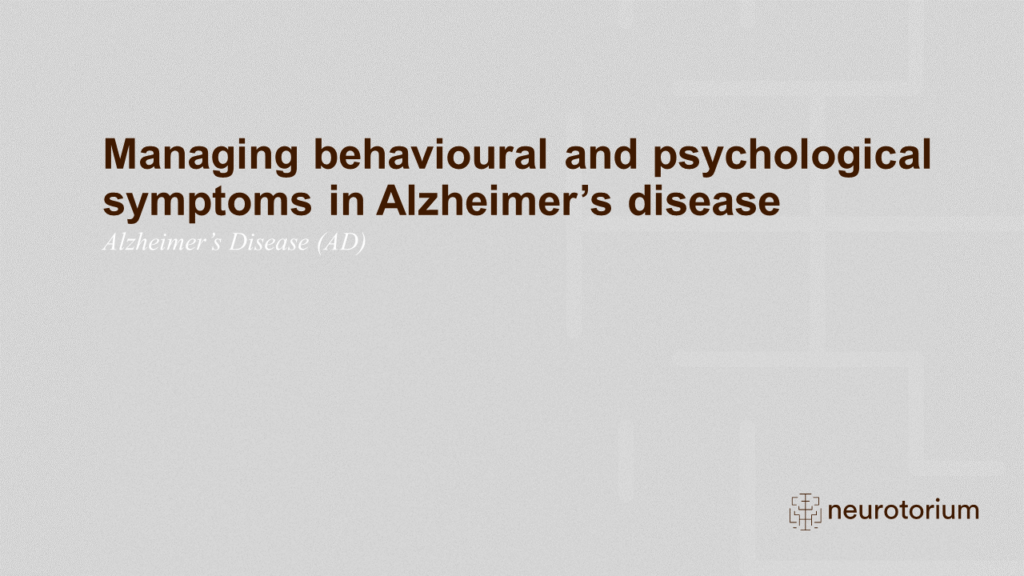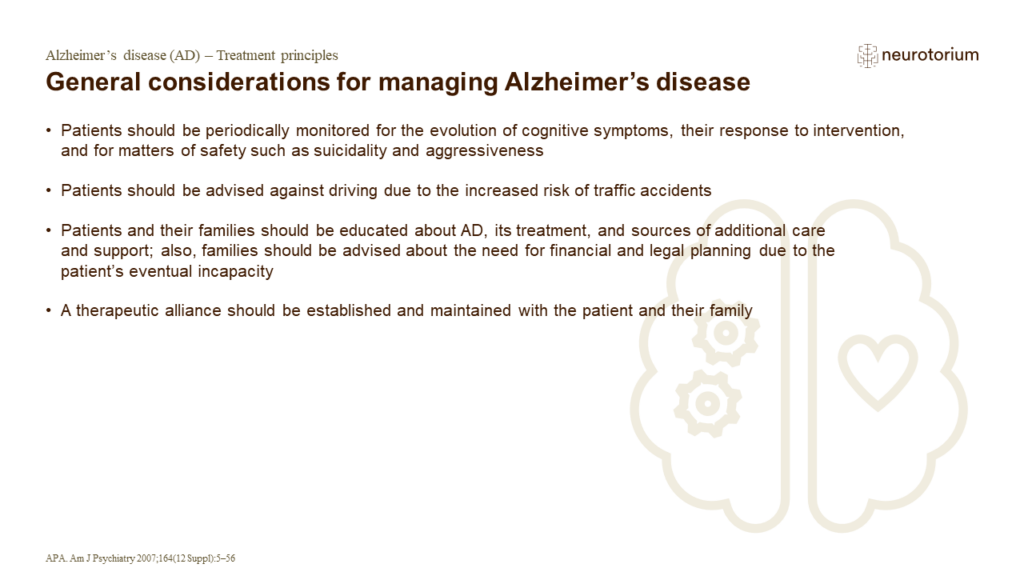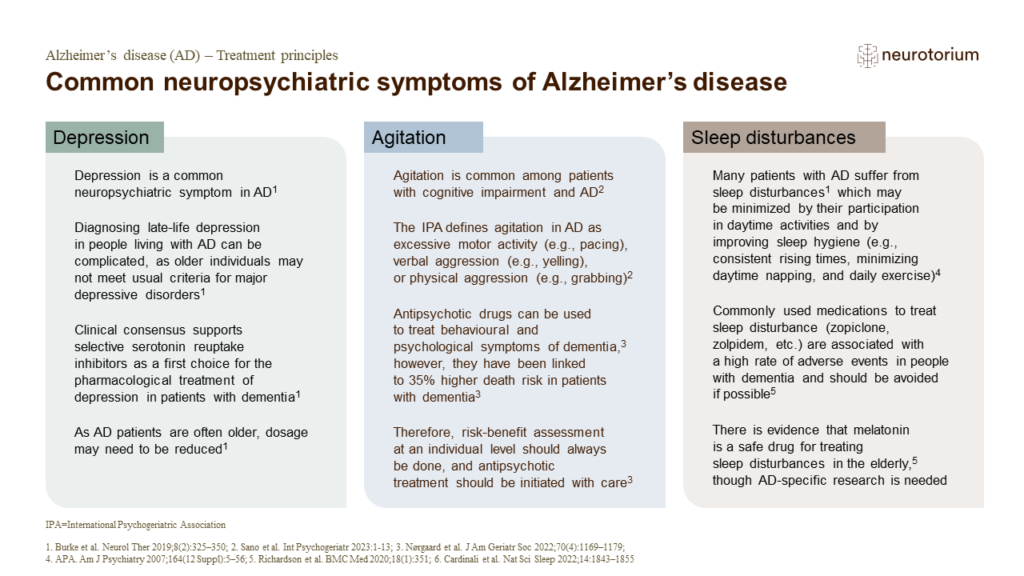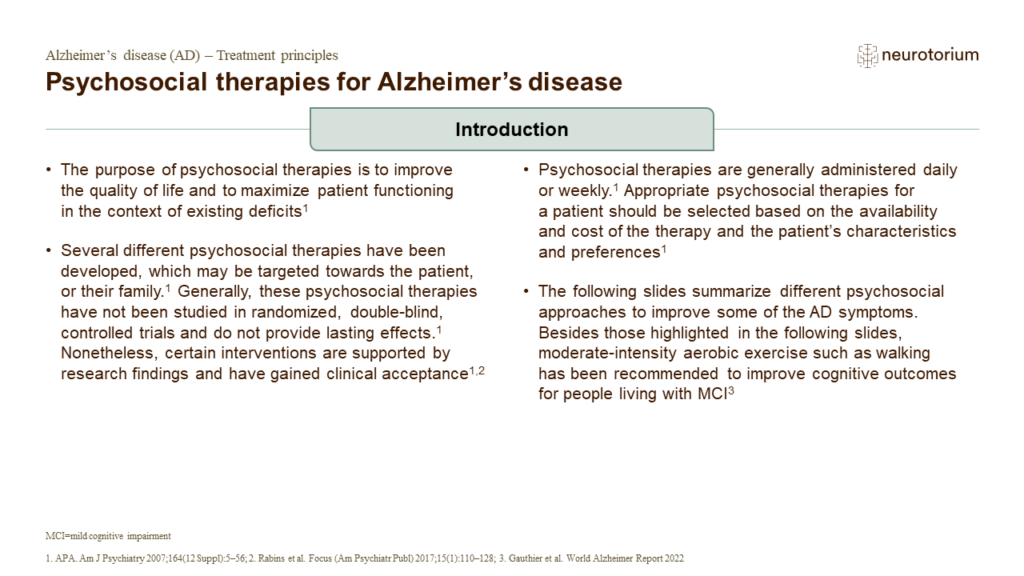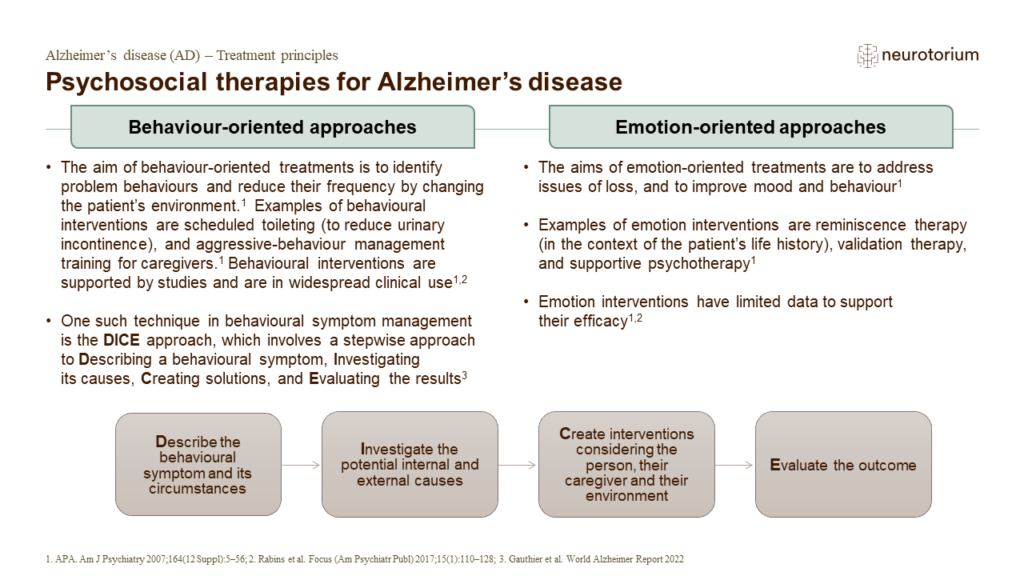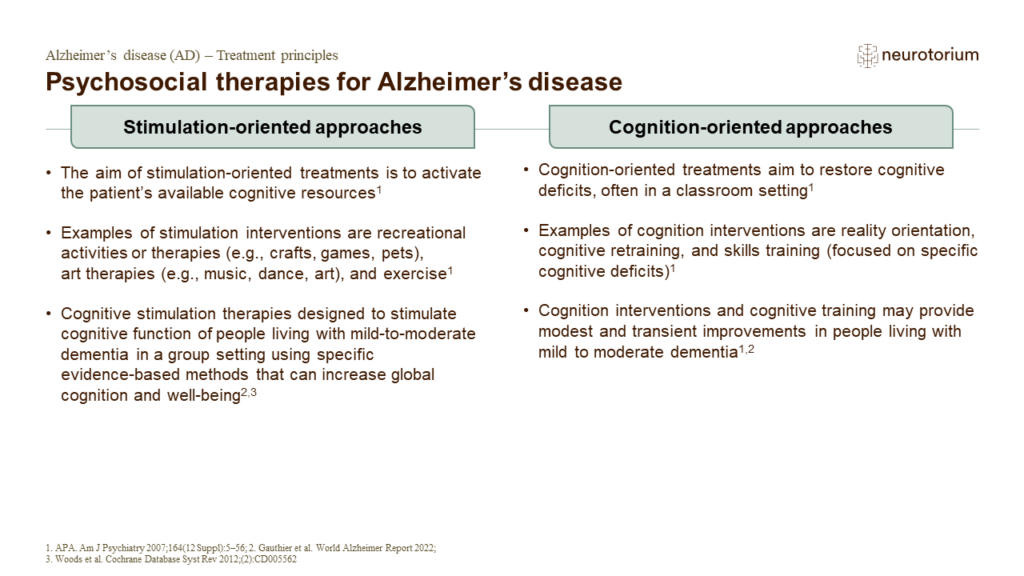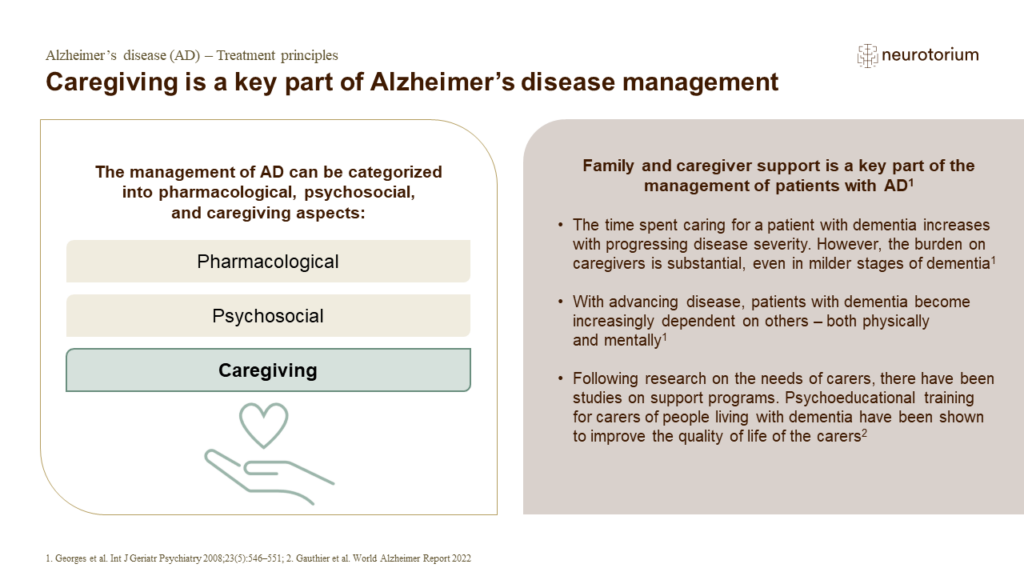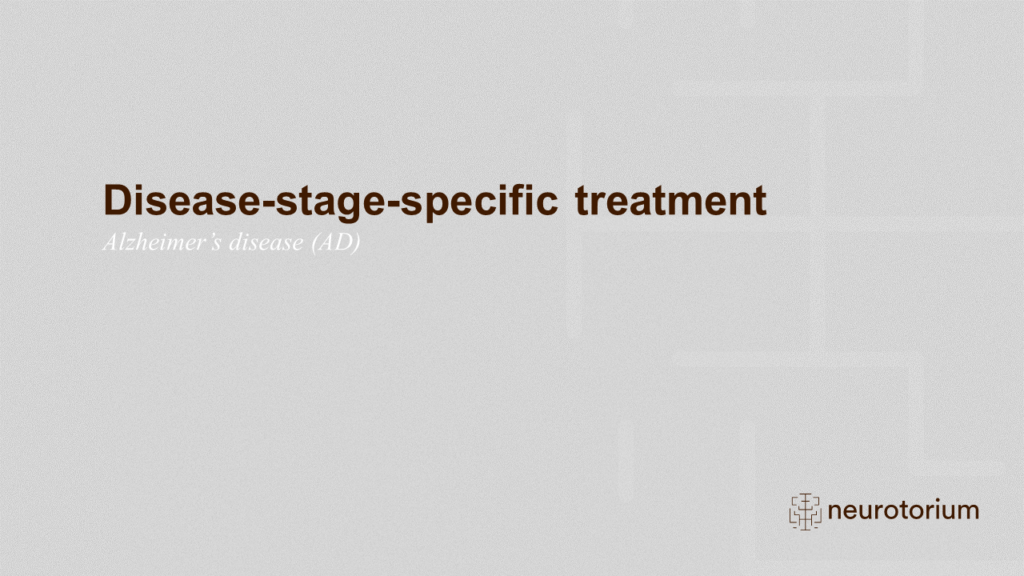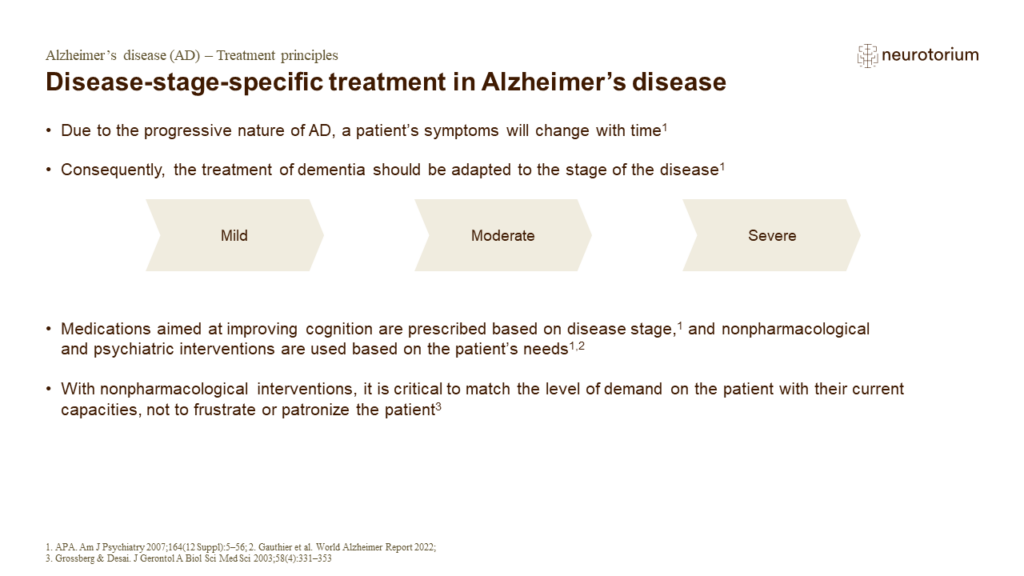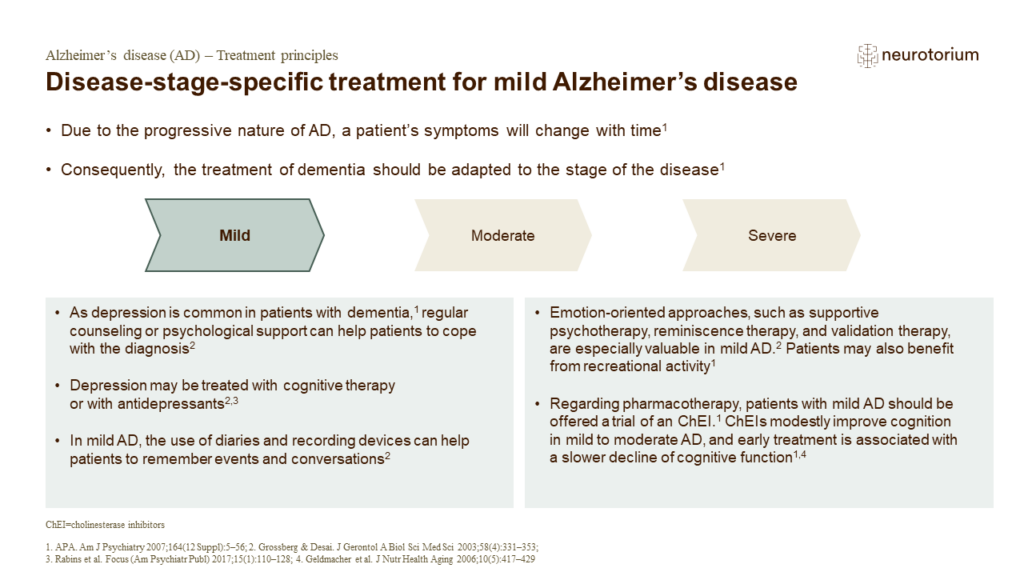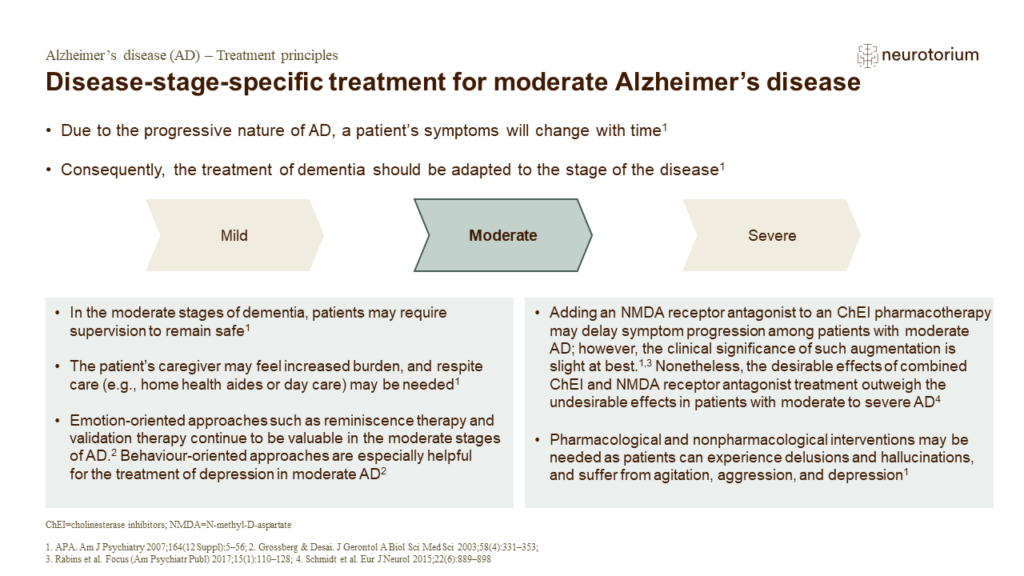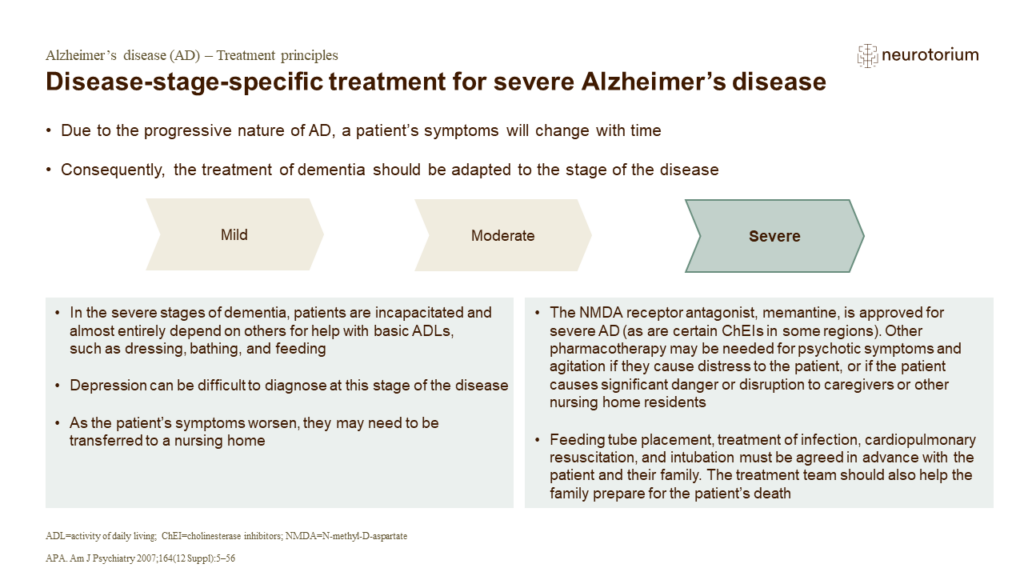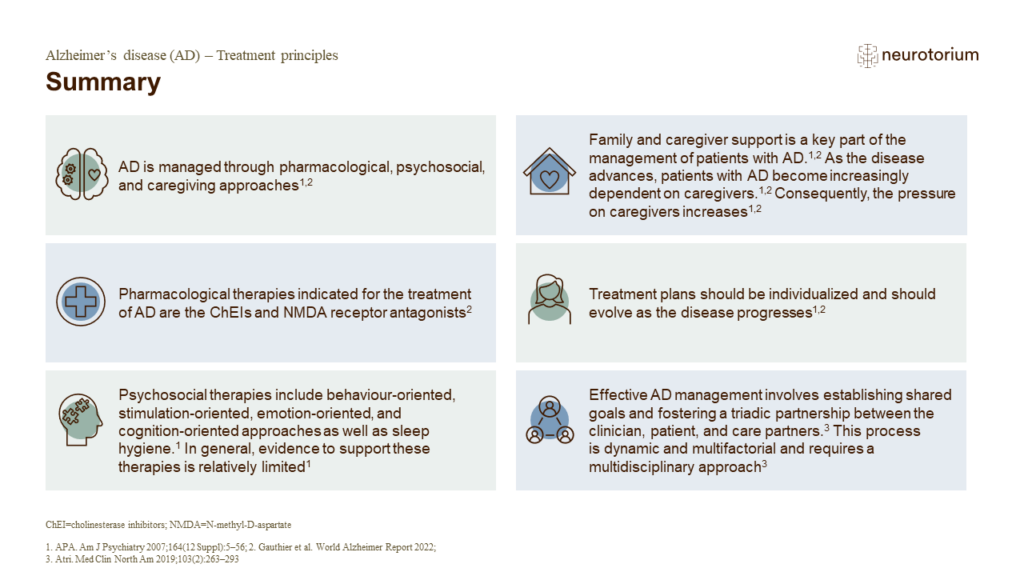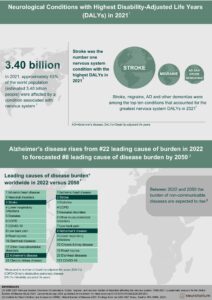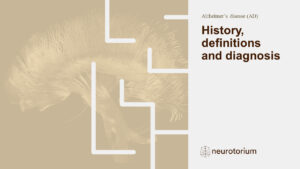Index for
slide deck
Introduction
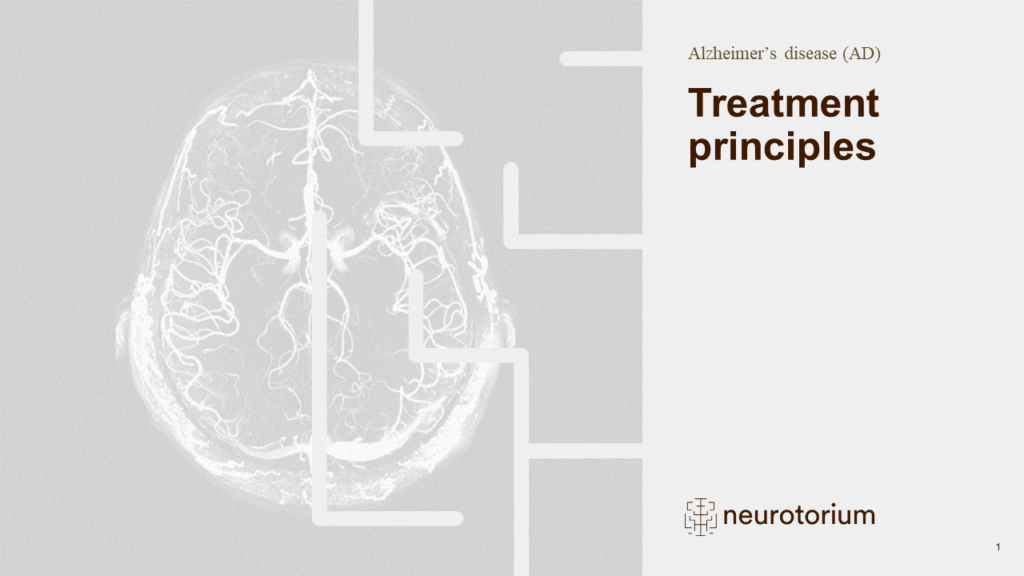
Alzheimer’s disease (AD) Treatment principles
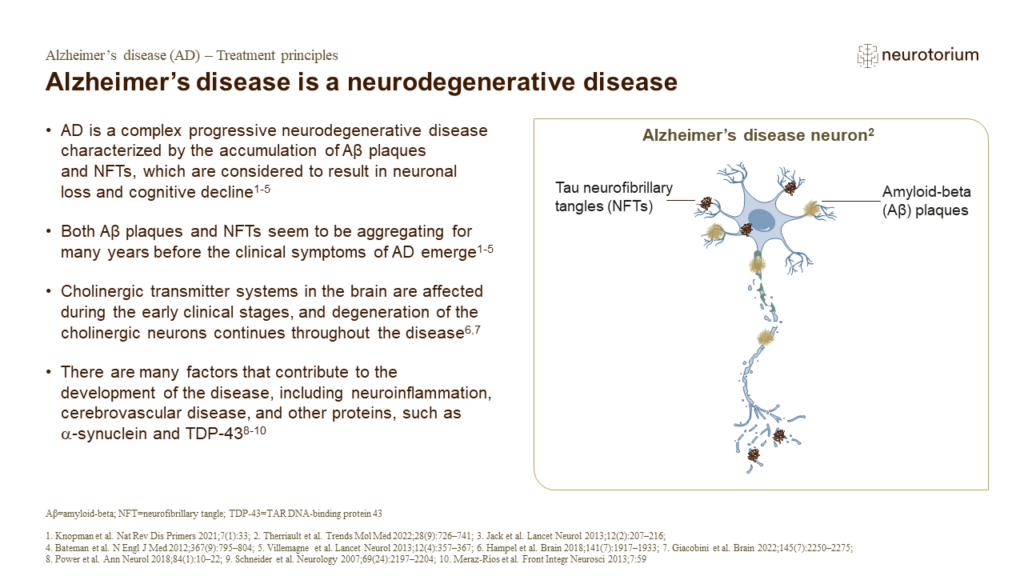
Alzheimer’s disease is a neurodegenerative disease
Medical treatment of Alzheimer’s disease
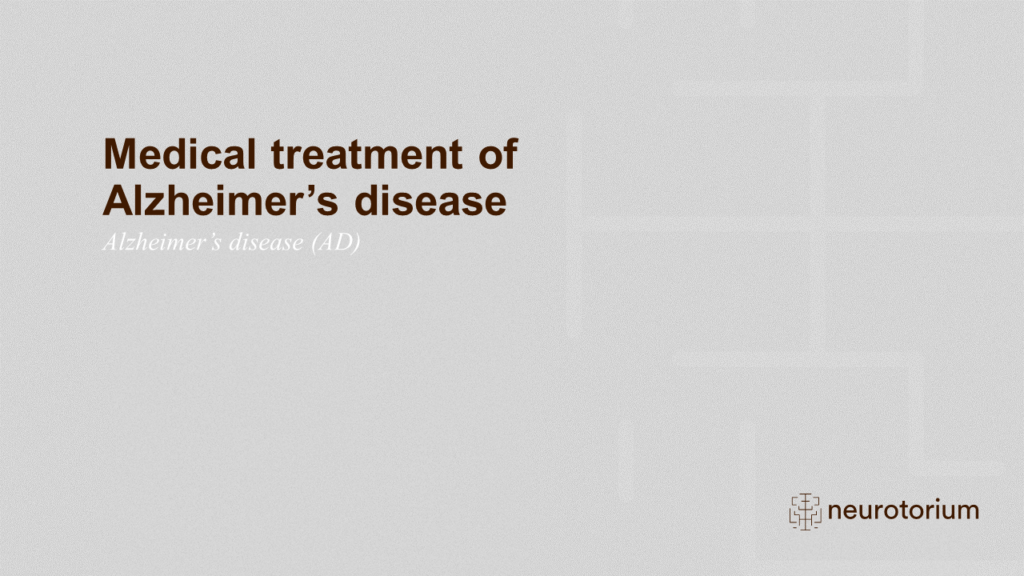
Medical treatment of Alzheimer’s disease

Symptoms of Alzheimer’s disease
References:
1. Atri A. The Alzheimer’s disease clinical spectrum: diagnosis and management. Med Clin North Am 2019; 103 (2): 263–293.
2. Knopman DS, Amieva H, Petersen RC, et al. Alzheimer disease. Nat Rev Dis Primers 2021; 7 (1): 33.
3. Joubert S, Joncas S, Barbeau E, et …
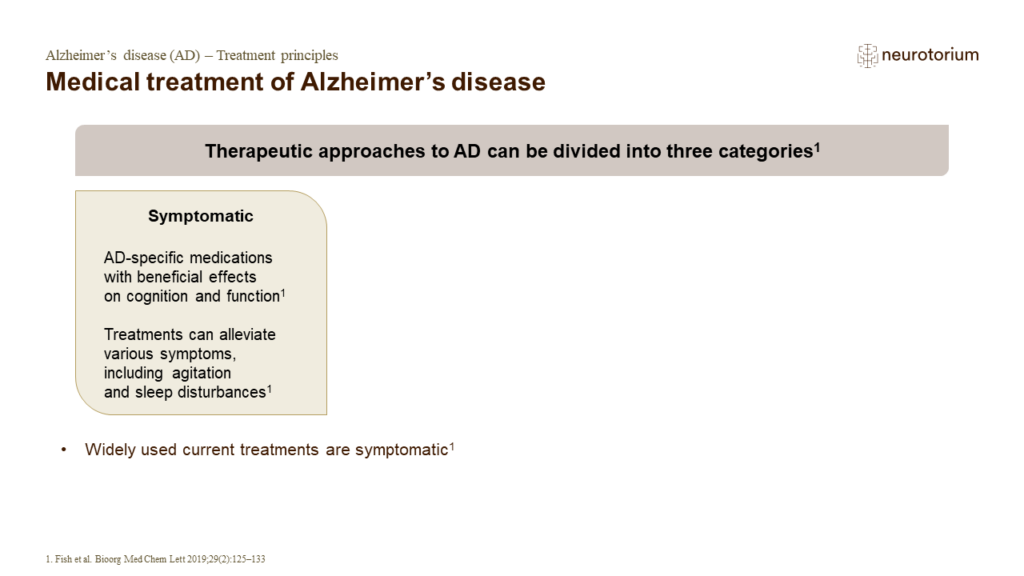
Medical treatment of Alzheimer’s disease
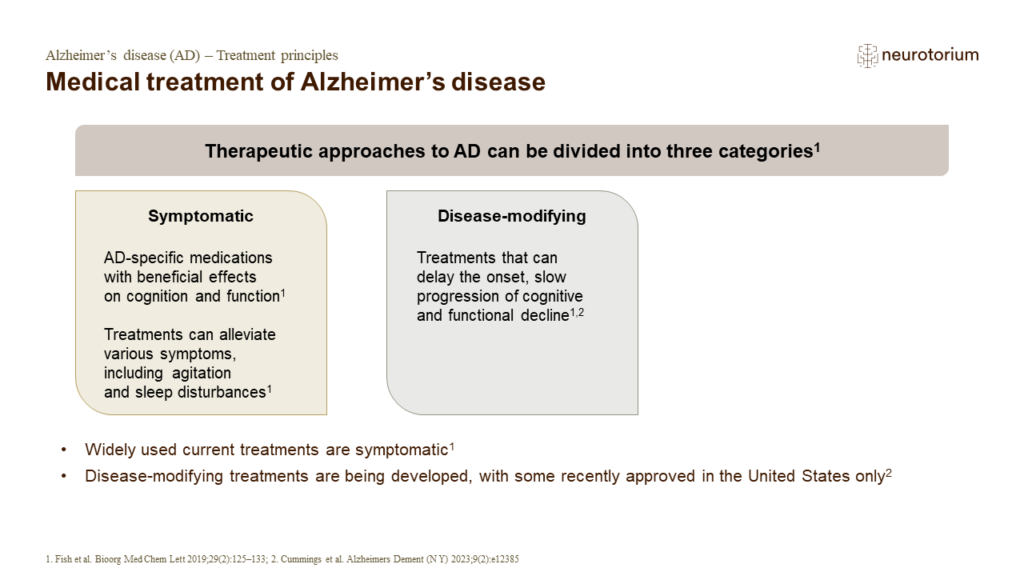
Medical treatment of Alzheimer’s disease: Disease-modifying
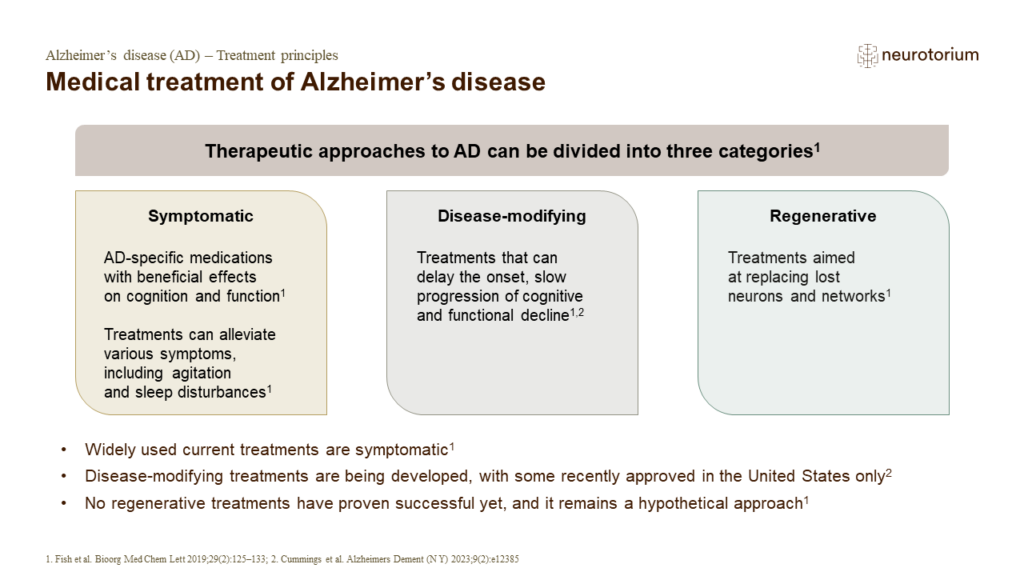
Medical treatment of Alzheimer’s disease: Regenerative
Therapeutic approaches to AD can be divided into three categories: symptomatic, disease-modifying and regenerative. In 2021, aducanumab received accelerated US Food and Drug Administration (FDA) approval for the treatment of AD.2 In 2023, lecanemab received accelerated FD…
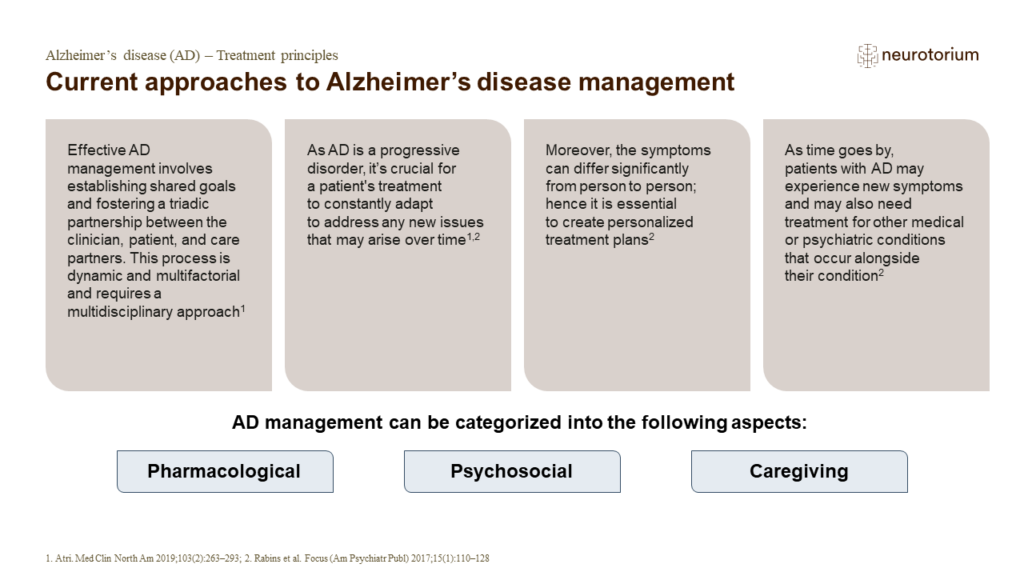
Current approaches to Alzheimer’s disease management
Pharmacological treatment of Alzheimer’s disease
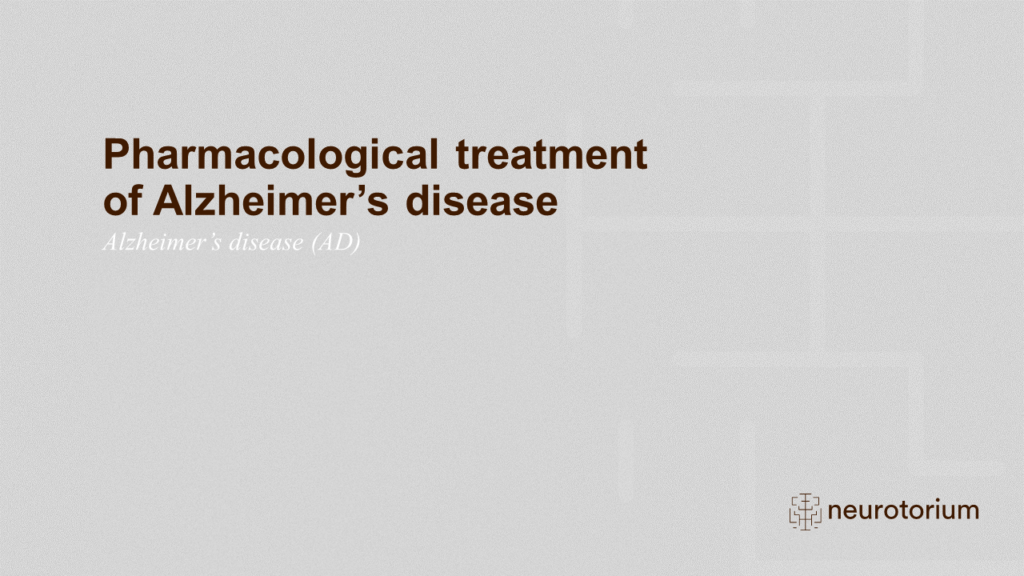
Pharmacological treatment of Alzheimer’s disease
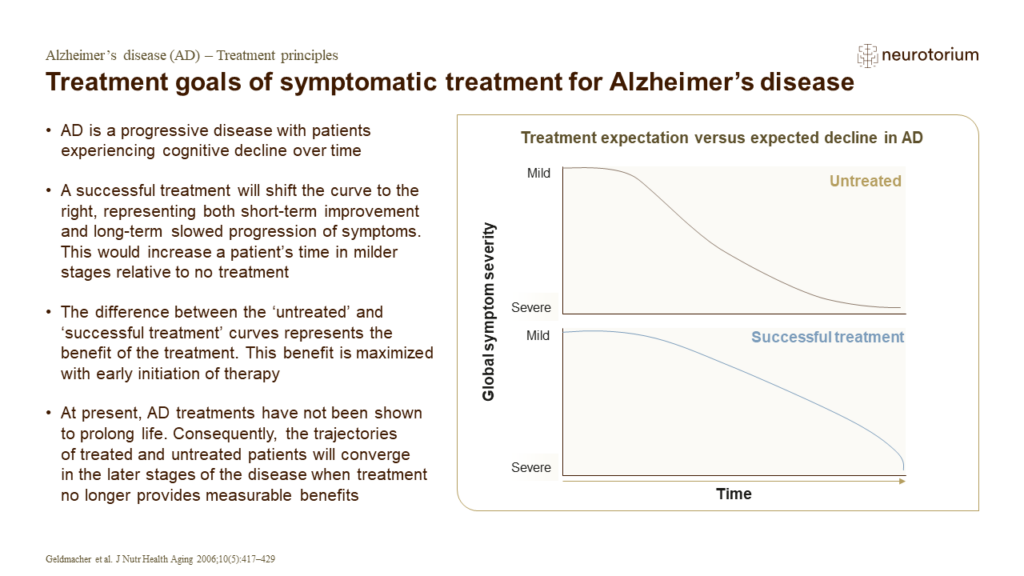
Treatment goals of symptomatic treatment for Alzheimer’s disease
As a key goal for managing cognitive impairment is an improvement in cognition, the availability of symptomatic treatments for AD is important.2 Additionally, improvement of behavioural symptoms can impact the quality of life of patients and caregivers, and may delay time…
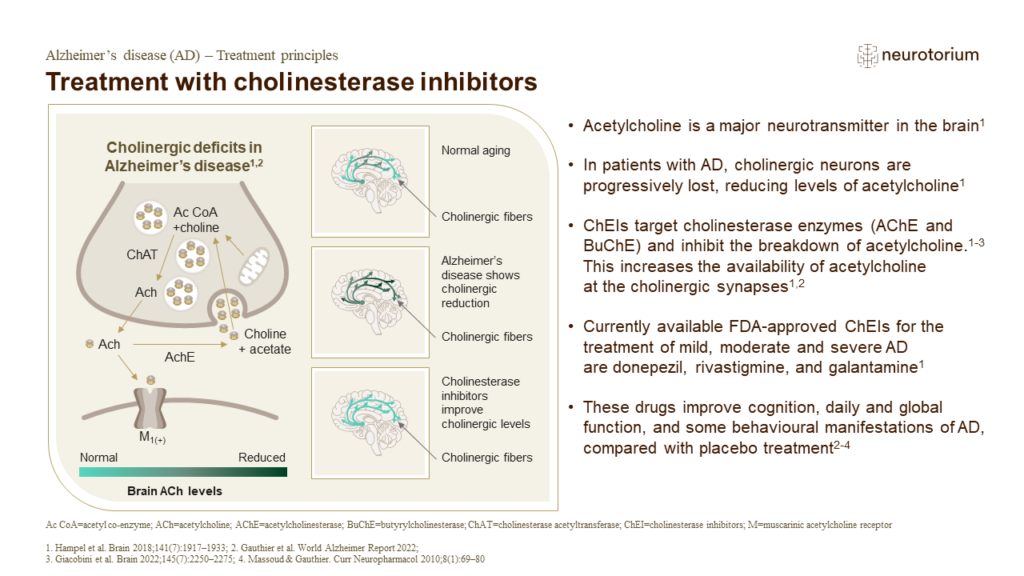
Treatment with cholinesterase inhibitors
Currently, the main available treatment of cognitive and behavioural symptoms in AD involves enhancement of cholinergic neurotransmission using cholinesterase inhibitors.3 There are currently three cholinergic-based drugs that represent the standard of care for AD.3 The u…
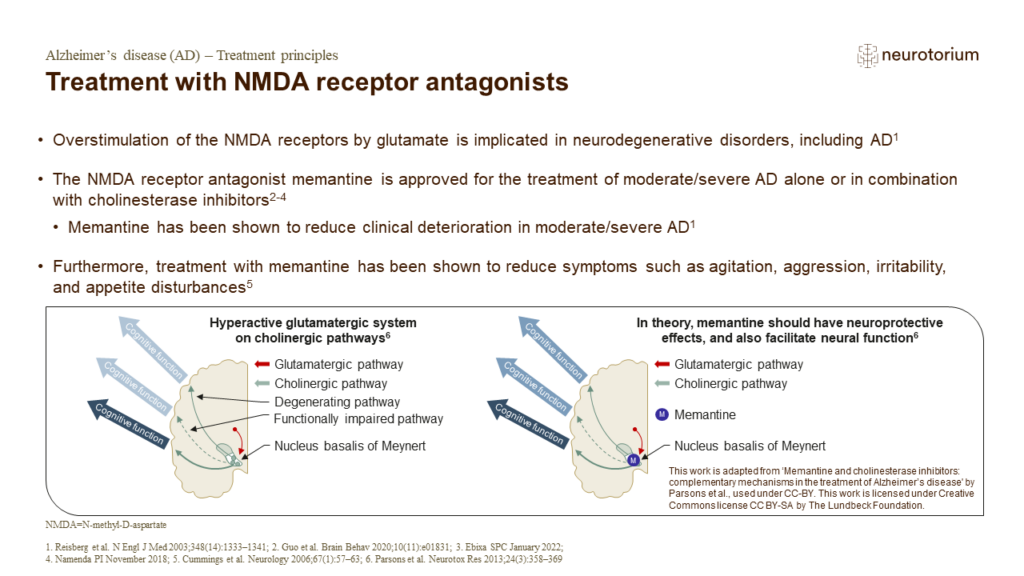
Treatment with NMDA receptor antagonists
The main neurotransmitter in the brain is glutamate.7,8 Overstimulation of the glutamatergic system may result in neuronal damage, known as excitotoxicity, which subsequently results in neuronal calcium overload.9 Included in the many postsynaptic receptors stimulated by …
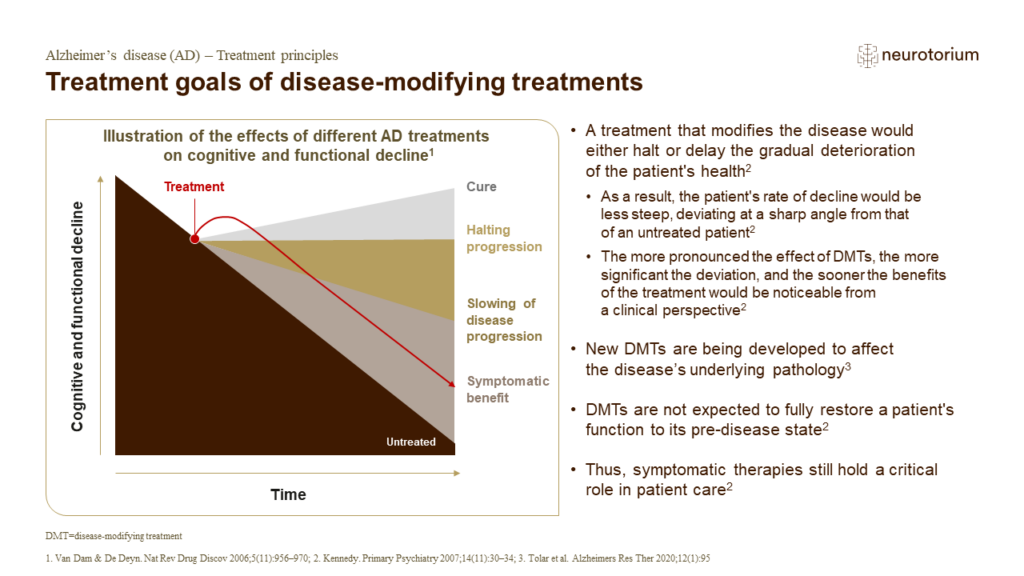
Treatment goals of disease-modifying treatments
As of August 2023, there are two FDA approved DMTs available for the treatment of AD.4,5 Aducanumab, the first novel therapy approved for AD since 2003, is a monoclonal antibody selective for aggregated forms of amyloid-b.4,6 Since its discovery, several experimental stud…
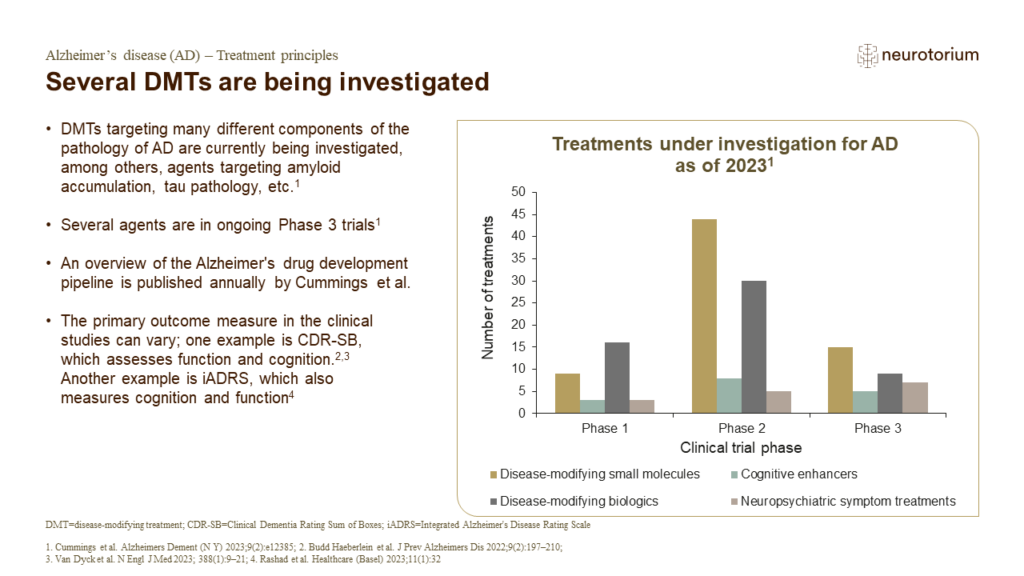
Several DMTs are being investigated
There are currently several DMTs under investigation.1 As of 2023, 44% of DMTs under investigation were biologics and 56% were small molecules.1 29% of the agents target neurotransmitters (including cognitive enhancers, and drugs being developed to reduce NPS), 17% target…
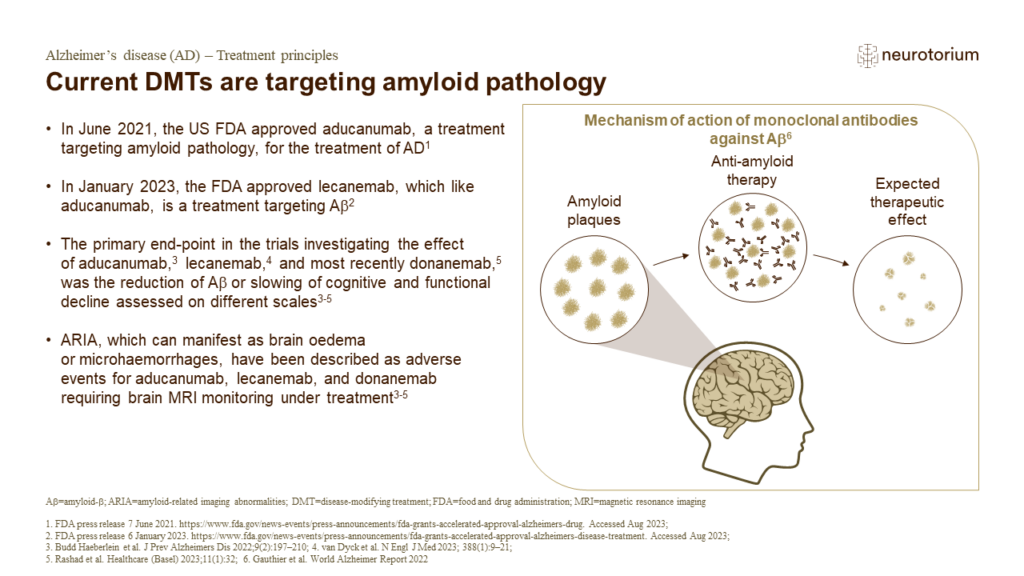
Current DMTs are targeting amyloid pathology
Several AD therapies under investigation target Aβ or its aggregates and can generally be divided into four therapeutic aims: 1) to reduce Aβ generation; 2) to enhance degradation and clearance of Aβ and its aggregates; 3) to neutralize soluble Aβ monomers or the resultin…


